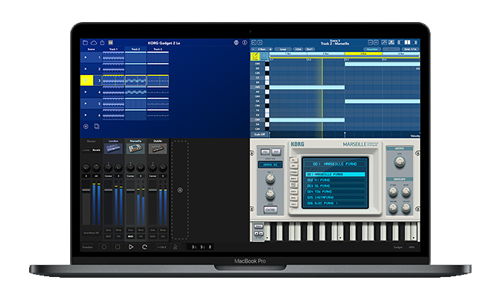

Melodics’ ‘Time Signatures’ course (for Keys and Drums) is a great starting point to structure your practice around, and if you’re a drummer you’ll be super prepared to dive into ‘ Shuffle Grooves’ just in time for when ‘Everybody Wants to Rule the World’ drops this week.ĭo you have some chords or progression for a song idea, but want to figure out a rhythm and timing that will work to capture the mood of what you’re imagining or back up the timing of your instruments or vocals?
Melodics audio settings how to#
The best way to learn is to play - so look out for ‘ Everybody Wants To Rule The World’ by Tears For Fears launching on 20th October in Melodics for premium subscribers.įor standard subscribers, make your goal this week to understand time signatures and how to play songs in 2/4, ¾, 4/4 and 6/8. If you’d like more context around the sound and feel of triplets (outside of 12/8) - you can often hear triplets in the syncopated, staccato vocals of Bone Thugs n Harmony, Three 6 Mafia, and Migos, which really helps to give them their distinctive flows. With the intro of ‘Everybody Wants to Rule the World’ the first synth chord (A/D) is on the “1” beat - and the second chord (G/D) jumps in a little early on the “2-and- a” beat, imparting a slightly urgent feel to the intro groove. With 12 beats to choose from, there’s a world of opportunity when it comes to deciding which beats the chord changes occur on.
Melodics audio settings free#
It’s like a buy one get one free deal for time signatures. It can also be known as the “Purdie Shuffle” (exemplified by Bernard Purdie in Steely Dan’s ‘ Home At Last‘, or John Bonham in Led Zeppelin’s ‘ Fool in the Rain‘) in drum circles, but you’ve likely heard it frequently in all sorts of contemporary songs.ġ2/8 means there are 12 1/8th note beats in each bar.īut what you can’t immediately see from reading the time signature is that those 12 beats are organized into four groups of three 1/8th notes. The four groupings is what gives it the familiar pulse of 4/4 but with the “triplet” feel of 6/8. Have you heard that shuffle rhythm before elsewhere? It’s got a feel somewhere in-between the steady pulse of a four to the floor beat, and the triplet feel of 6/8. The rhythm of the song gives it a shuffling feel, like you’re tumbling through it. Let’s take a look at the 12/8 time signature in the context of ‘ Everybody Wants To Rule The World’ by Tears For Fears, available to play in Melodics this week for premium subscribers. It all depends on the mood you’re going for and in some cases, the style or tradition of music you’re playing or making. Having an appreciation for time signatures is useful for playing every instrument (both melodic and rhythmic) - but how do you decide what kind of rhythm/time signature you’ll use? You could ask this question another way… How do you decide which shirt to wear in the morning? Having such a wide interval between these two notes is unusual in western music, which is what gives the harmonic minor a pretty exotic sound (some might say Spanish or Arabic) which can also sound mysterious or spooky to some ears. Instead of a whole-step between the 6th and the 7th, it’s now 3 half-steps (also known as an augmented 2nd - or minor 3rd). The raised 7th degree in the harmonic minor scale is pretty cool (that’s the difference between the minor and major third when you’re playing the G major 5 chord). But what about the melodies to play over them?

While the song is basically written normally in the minor key, to make the chord progression work “better” the minor 5 chord gets changed to Major. In most popular songs, this is how the harmonic minor scale gets used. Now instead of the 5 chord being G minor (as you find with the natural minor scale), with the harmonic minor scale it’s G Major which brings the life back to the 5-1 party.

This is the same in any other key - just remember that the only difference between the natural and harmonic minor scale is that the 7th degree is raised one half-step (to the next closest note). To change a natural minor to a harmonic minor scale, you raise the 7th degree by a half step. The harmonic minor scale is almost identical to the natural minor scale - there’s only one note different, but it makes a big difference in how the scale sounds. The way we can get around this is with the harmonic minor scale. Ghostbuster: The Genius of Ray Parker Jr.We’re on the Halloween hunt for spooky rhythms.

Could Kate Bush be one of music’s most underrated Pop artists?.Learn from a band that’s changed the face of music since the 70s.


 0 kommentar(er)
0 kommentar(er)
